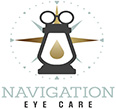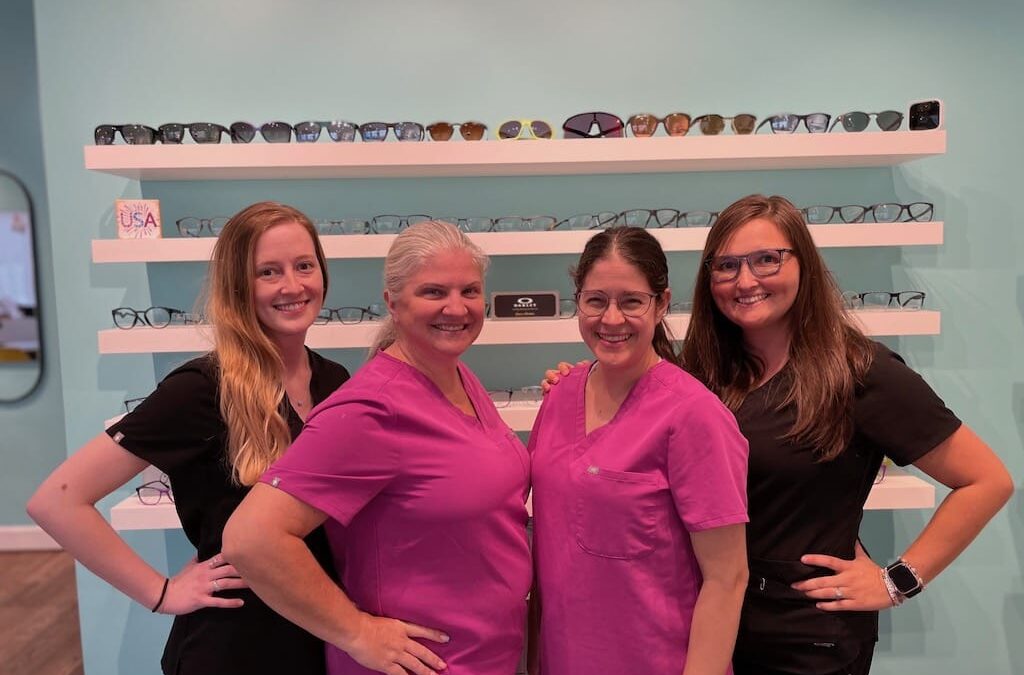The Art of Visual Efficiency: Enhancing Focus and Concentration with Therapy
In our fast-paced world, the ability to focus and concentrate is more valuable than ever. Whether it’s tackling a work project, studying for an exam, or simply enjoying a good book, our visual system plays a pivotal role in maintaining optimal focus. In this blog post, we’ll explore the art of visual efficiency, the challenges that can arise when it’s compromised, and how vision therapy, often prescribed by Navigation Eye Care’s Optometrist Chesapeake VA, can help enhance focus and concentration.
The Power of Visual Efficiency
Visual efficiency refers to the ability of our eyes to work together seamlessly, providing a clear and stable image. This efficiency is crucial for various tasks:
- Reading: Swift and accurate eye movements are essential for reading without interruptions.
- Computer Work: Extended screen time requires precise focus to prevent eye strain.
- Driving: Maintaining focus on the road and rapidly assessing traffic conditions demand optimal visual efficiency.
- Learning: In the classroom, efficient vision is vital for absorbing information and staying engaged.
Challenges to Visual Efficiency
Several factors can compromise visual efficiency:
- Eye Coordination Issues: When both eyes don’t align perfectly, it can lead to difficulties in maintaining focus.
- Focusing Problems: Difficulty in adjusting focus from near to far distances or vice versa can affect efficiency.
- Eye Fatigue: Prolonged periods of close-up work, such as reading or computer use, can lead to eye strain and fatigue.
- Reduced Attention Span: Struggling to maintain focus can reduce attention span, impacting productivity and learning.
Therapy for Enhanced Visual Efficiency
Visual therapy, provided by Navigation Eye Care’s Optometrist Chesapeake VA and her team of vision therapists, is designed to address these challenges and improve visual efficiency. Here’s how it can help enhance focus and concentration:
- Eye Exercises: Vision therapy includes a series of targeted eye exercises to improve eye coordination, tracking, and focusing abilities. These exercises strengthen the eye muscles, enhancing control and efficiency.
- Accommodative Training: Vision Therapy can include training to improve the eye’s ability to change focus quickly and accurately, which is vital for tasks that involve shifting between near and far distances.
- Visual Awareness: Vision Therapy helps individuals become more aware of their visual habits and learn strategies to reduce eye strain and fatigue.
- Hand-Eye Coordination: Vision therapy often includes activities that enhance hand-eye coordination, which can be valuable for various tasks, including sports and fine motor skills.
The Importance of a Comprehensive Approach
Enhancing focus and concentration isn’t just about the eyes; it’s a holistic process that involves the entire visual system. A comprehensive approach that includes vision therapy can be highly effective in improving visual efficiency and enhancing overall concentration.
What to Expect During Vision Therapy
Vision therapy and Navigation Eye Care involves regular sessions with a qualified therapist. The therapist, under the supervision of Navigation Eye Care’s Optometrist Chesapeake VA, tailors exercises and activities to the individual’s specific visual needs. The duration of therapy varies depending on the severity of the issues and the progress made.
The art of visual efficiency is essential for maintaining focus and concentration in our daily lives. If you find yourself or your child struggling with eye coordination, focusing problems, or eye fatigue, consulting Navigation Eye Care’s Optometrist Chesapeake VA who specializes in vision therapy can be a transformative step toward enhancing visual efficiency and concentration. Remember, the power of focused vision can unlock new levels of productivity, learning, and enjoyment in all your endeavors.
Vision Therapy at Home: Fun Exercises to Support Treatment Progress
Vision therapy, as utilized and prescribed by Navigation Eye Care’s Optometrist Chesapeake VA, is a specialized program designed to improve visual skills and efficiency. While sessions with a vision therapist are crucial, there are also fun and engaging exercises that can be done at home to support and enhance treatment progress. In this article, we’ll explore some of these exercises that can make a significant difference in your or your child’s vision therapy journey.
Understanding the Importance of Vision Therapy
Before we dive into the exercises, it’s essential to understand why vision therapy is beneficial. Vision therapy is designed to address a wide range of visual issues, including eye coordination problems, focusing difficulties, and visual discomfort. It can benefit both children and adults and has been shown to improve reading fluency, academic performance, and overall quality of life.
The Role of At-Home Exercises
While regular visits to a vision therapist are essential, at-home exercises serve as a complement to in-office sessions. These exercises reinforce the skills and techniques learned during therapy, helping to solidify progress and accelerate improvement.
Fun and Engaging At-Home Exercises
- Brock String Exercise:
- This exercise helps improve eye coordination and tracking skills. You’ll need a Brock string, which is a string with colored beads at various intervals.
- Hang the string vertically, and hold one end to your nose.
- Focus on the first bead, and try to see it as a single bead while the others appear double.
- Move your gaze along the string, focusing on each bead in turn.
- This exercise enhances convergence, the ability of both eyes to work together when looking at a near object.
- Pencil Push-Ups:
- Pencil push-ups are excellent for training eye coordination and convergence.
- Hold a pencil vertically at arm’s length, with the eraser facing you.
- Focus on the letter or design on the pencil’s side.
- Slowly bring the pencil closer to your nose while maintaining focus.
- Stop when you see two pencils instead of one.
- Bring the pencil back to arm’s length.
- Repeat this process 10-15 times.
- Near-Far Focus:
- This exercise helps improve the ability to shift focus between near and far objects.
- Find a small object (like a pencil) and a distant object (like a picture on the wall).
- Start by focusing on the near object for a few seconds.
- Then, switch your focus to the distant object for a few seconds.
- Continue to alternate your focus between the two objects for a minute or two.
- As you progress, increase the time you spend focusing on each object.
- Memory Matching Games:
- Memory matching games with cards or tiles can help enhance visual memory and concentration.
- Choose a memory game with various images or symbols.
- Play the game regularly, attempting to match pairs of cards by remembering their positions.
Consult Navigation Eye Care
While these at-home exercises can be beneficial, it’s crucial to consult Navigation Eye Care’s Optometrist Chesapeake VA before beginning any vision therapy activities at home. She can provide guidance on which exercises are most suitable for your specific vision needs and how often you should perform them.
Vision therapy at home can be both fun and rewarding. These exercises not only support your in-office vision therapy sessions but also provide an opportunity for continued improvement. Remember that consistency is key, and with dedication and regular practice, you can make significant progress in enhancing your visual skills and overall quality of life.

